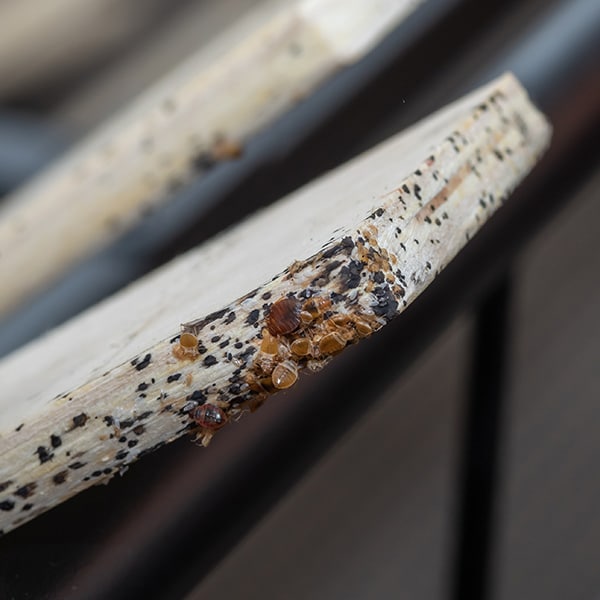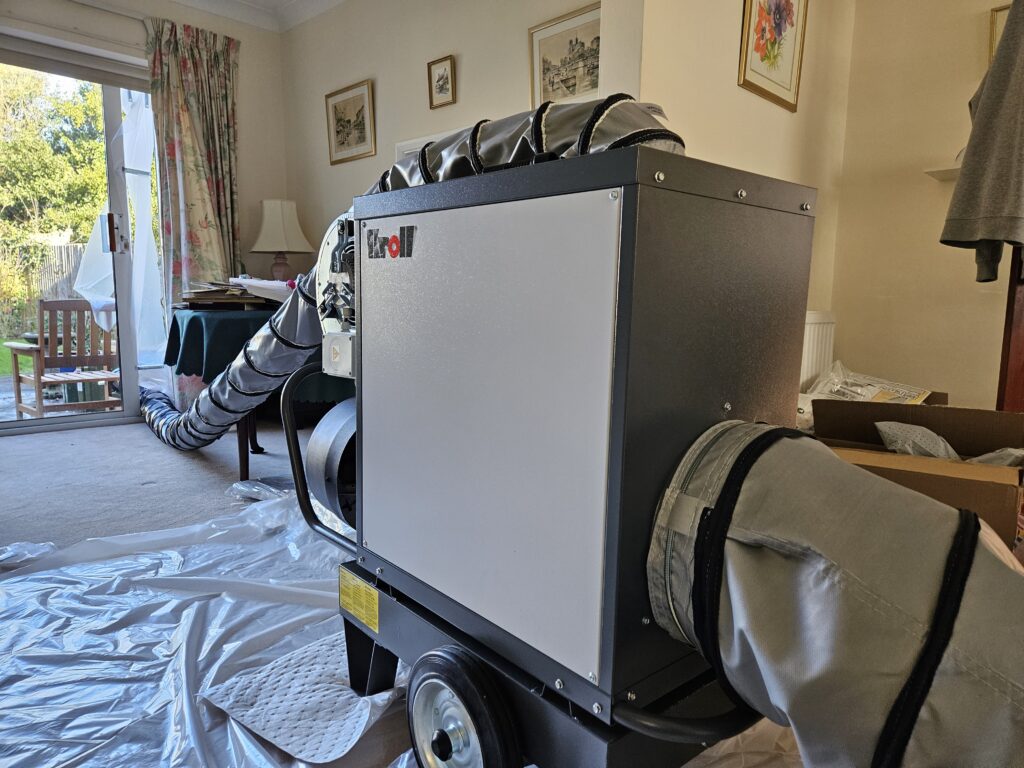Where Do Bed Bugs Come From?
Bed bugs spread by hitchhiking on luggage, clothing, and furniture, making hotels, student housing, and second-hand items common sources in the UK.


Where do Bed Bugs Come From and How do They Spread?
Bed bugs are found all over the world and can infest anywhere, regardless of how clean your home or business is. They aren’t attracted to dirt or food but rather to warmth, carbon dioxide, and human blood—their main source of food, known as a blood meal. These elusive pests hide in electronics, box springs, bed frames, and stuffed toys, making them notoriously hard to get rid of once they settle in.
In the UK, bed bug infestations are most commonly linked to travel and used household items. When you travel, bedbugs get inspired to take their own holiday, crawling into your suitcase, clothing, or personal belongings, spreading them long distances. Buying used furniture and second hand goods, especially mattresses, sofas, or box springs, without proper inspection can also introduce bed bugs into your home.
Once inside, bed bugs nest in clever hiding spots, like loose wallpaper, mattress seams, and upholstered surfaces, only coming out at night to feed. Adult bed bugs, including the different life stages from nymphs to mature adults, prefer to feed on the human body, especially exposed areas of skin while sleeping. In apartment buildings, they can crawl through small cracks, electrical outlets, and pipes, spreading between rooms and creating a big bed bug problem.
Here’s a look at the common places bed bugs come from in the United Kingdom.

Travel & Hotel Rooms
Bed bugs love hotel rooms, hostels, and holiday rentals where they can easily transfer between guests. If you want to sleep tight and avoid bringing bed bugs home, always keep luggage on a suitcase stand, inspect upholstered surfaces, bed frames, and box springs for stains, shed skins, or reddish-brown bugs, and always give your clothes a hot wash and tumble dry on a high heat setting after your trip to effectively kill any hitchhiking bed bugs or eggs.
Second-Hand Furniture and Other Items
Buying second-hand furniture without checking for signs of infestation is one of the most common ways to bring bed bugs into your home. These pests hide in mattress seams, box springs, furniture joints, and other items waiting for their next food source. If you’re purchasing used items, always inspect for dark yellow eggs, shed skins, and reddish-brown bugs, and if in doubt, it’s better to find another piece.
Flats, Multi-Unit Buildings & Retail Stores
In a block of flats or retail stores, bed bugs can spread through walls, plumbing, electrical outlets, and other cracks, making them particularly difficult to contain. If you live in a flat or apartment complex, it’s essential to seal cracks, report any signs of bed bugs to your local council or pest control company, and take action quickly to prevent bed bugs from spreading further. Signs of bed bugs include bite marks, skin sheds, and fecal stains.
Public Transportation & Shared Spaces
Although less common, bed bugs have been found on public transportation such as buses, trains, and planes. They can also infest schools, offices, hospitals, and care homes, especially if people unknowingly transport them in bags or clothing. Bed bugs do not live on pets or other warm blooded animals; their preferred host is humans. While they don’t transmit disease, bed bug bites can cause itchy welts, allergic reactions, and painful swelling in some individuals. To treat bites, keep the affected exposed areas clean.

Signs of a Bed Bug Infestation
Small reddish-brown fecal spots on mattresses, upholstery, or walls.
Presence of shed skins, eggs, or empty eggshells.
Itchy welts or bite marks appearing in clusters on exposed areas of the human body.
Sightings of adult bed bugs or nymphs, which can survive several days without feeding.
Musty or sweetish odor in heavily infested areas.
How to Prevent Bed Bugs from Returning Home
Inspect hotel rooms and luggage carefully before and after travel.
Keep luggage off beds and floors in infested areas.
Wash clothes and linens in a hot setting and tumble dry on high heat to effectively kill bed bugs.
Avoid bringing in second hand goods without thorough inspection.
Use protective mattress and box spring encasements.
Regular cleaning and vacuuming reduce hiding places.
Seal cracks and crevices in walls, floors, and furniture.
Find out more about our prevention tips.
Effective Bed Bug Control Methods
Getting rid of bed bugs is extremely difficult without professional help. Here are some of the most effective methods:
Heat Treatment: Professional heat treatments raise room temperatures to levels that effectively kill bed bugs, eggs, and nymphs in all life stages.
Cold Treatment: Freezing infested items at very low temperatures for several days can also eliminate bed bugs.
Diatomaceous Earth: This natural desiccant dries out bed bugs upon contact and can be applied in cracks and crevices.
Chemical Treatments: Certain chemicals and pesticides labeled for bed bugs can be used carefully, though some bed bugs have developed resistance.
Integrated Pest Management: Combining methods such as vacuuming, sealing entry points, and monitoring can improve control success.
If you suspect a bed bug infestation, contact a professional pest control company immediately to prevent the problem from worsening and spreading

5 Facts About Bed Bugs:
1.) Bed Bugs: An Age-Old Problem
Bed bugs have been around for centuries—they originally lived in caves, feeding on bats in the Middle East before spreading worldwide through human civilization and trade. They later made their way to the Americas with European settlers.
2.) Bed Bugs Love to Travel
They can enter homes in multiple ways, usually by hitching a ride on clothing, luggage, or furniture from an infested area. Whether you’ve stayed in a hotel, taken public transportation, or brought home a second-hand sofa, these pests can sneak in unnoticed.
3.) Bed Bugs Love Clean Homes
Clean homes aren’t immune to bed bugs—they don’t feed on dirt, just blood. As long as they have access to a blood meal, they can thrive anywhere, whether in a luxury hotel or a shared flat.
4.) Bed Bugs Love Secondhand Furniture
Second-hand furniture is a common culprit. Without a thorough inspection, you could bring home an active bed bug population along with your new bargain.
5.) Bed Bugs Don’t Just Live in Beds
Bed bugs aren’t just found in homes—they can spread through schools, offices, colleges, and preschool facilities, anywhere people gather, rest, or leave belongings for long periods. Once inside, they hide in tiny cracks and crevices, emerging at night to feed, leaving behind bites and itchy skin.
Though bed bugs are small, they can cause big problems—if you think you’ve spotted signs of an infestation, act fast to stop them in their tracks!

Our Bed Bug Heat Treatments
If you think a bed bug infestation is present at your home or business, it’s vital to take immediate action to address the problem, as bed bugs can multiply and spread rapidly. Professional pest control services are necessary to eradicate a bed bug infestation permanently. ThermoPest always recommends a bed bug heat treatment for effective and permanent extermination of bed bug infestations. Give us a call or pop us an email today- our friendly team is always happy to chat about your pest issues and answer any questions you may have.
Table of Contents
Industry Experts
Leading experts in bed bug control
Emergency Call-outs
Guaranteed quick and rapid responses to urgent infestations
Contract Work
For ongoing problems, use our preventative contracts
Get a quote
- Commercial or Domestic
- Nationwide Pest Control
- Help & Advice on 0808 189 2310
Frequently Asked Questions
Where do bed bugs come from?
Bed bugs act as accidental hitchhikers. They do not spontaneously generate from dirt or poor hygiene. Instead, they enter properties by latching onto luggage, clothing, backpacks, or secondhand furniture.
Do bed bugs come from dirty homes?
Can you bring bed bugs home from hotels?
Do bed bugs spread through public transport?
Can bed bugs come from neighbours in adjoining flats?
Do second-hand mattresses and furniture carry bed bugs?
Why are bed bug infestations rising in the UK?
Talk to us about Bed Bug Pest Control
Call us on 0808 189 2310 – or complete our quote form below.
Homeowners and Businesses Trust ThermoPest
Speak to a bed bug expert today!
- Commercial or Domestic
- Lines open 24 hours a day 7 days a week
- Nationwide Bed Bug Control
- Technicians work 24 hours a day
- Help & Advice on 0808 189 2310
